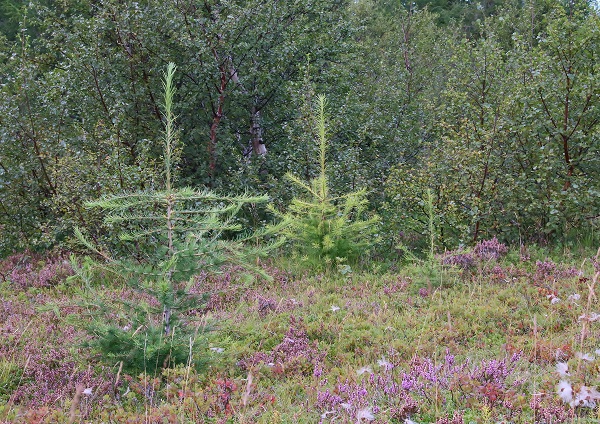New climate strategy gives Icelandic forests an upswing
21.09.2018

Icelandic Forest Service staff on excursion in a 50 year old Sitka spruce stand in Tumastaðir South-Iceland. Funding for forestry will almost double from current levels by 2023, with emphasis on carbon sequestration coming to the top of the list of forestry goals, mostly by increasing the rate of afforestation.
The total area of forest and woodland in Iceland has at least doubled, possibly quadrupled, since 1950. Whether this should be considered a large or small increase depends on the comparison. It is large in comparison to the woodland area in 1950, but very small indeed compared to Iceland’s land area and to the woodland area at the time of settlement.
Native birch woodlands have expanded through natural regeneration within fenced areas but much less in areas not specifically protected from grazing until recently. A recent (2015) remapping of natural woodland extent by the IFS Research Division indicates for the first time that birchwoods are generally expanding and now cover 130 km2 more than in 1990 or a total of roughly 1,5% of Iceland. Cultivated forests cover another 0,4% bringing the total forest and woodland cover to very nearly 2% of Iceland’s land area.
Funding cut drastically
After the financial crisis of 2008-2009, funding for forestry was cut drastically. In real terms, public funding for forestry in 2013 was only half of what it was 2005. This resulted in a drastic reduction in planting, down to about 3 million seedlings in 2017. Among the consequences were tree nurseries going out of business and educated foresters moving abroad to find work.
Despite rapid economic recovery in Iceland during 2014-2018, funding for forestry has only increased slightly. However, Iceland now has a developing commercial forest resource that is already starting to generate significant income (source: www.skogur.is).
A substantial increase in forestry ahead
The Icelandic Government recently announced a new climate strategy, intended to boost efforts in cutting net emissions. The new measures are to help Iceland meet its Paris Agreement targets for 2030 and reach the government‘s ambitious aim to make Iceland carbon neutral before 2040.
The Strategy consists of 34 Government measures, ranging from an increase in reforestation to a ban on new registration of fossil fuel cars by 2030.
The main emphasis of the new plan is on two measures: 1) to phase out fossil fuels in transport, and 2) to increase carbon sequestration in land use, by afforestation, revegetation and restoration of wetlands. Climate mitigation measures will get a substantial increase in funding – almost 7 billion Icelandic krónur in the period 2019-2023.
A general carbon tax, already in place, will be gradually increased.
 Afforestation emphasized
Afforestation emphasized
Afforestation and revegetation have long been a major emphasis in Iceland‘s climate policies, as these actions help to mitigate climate change by uptake of carbon from the atmosphere. Funding for these activities will be increased. The Government will also support efforts to reclaim drained wetlands, which in recent years have been shown to be a significant source of carbon emissions. Further details on the policy may be obtained from the Ministry for the Environment and Natural Resources web site www.umhverfisraduneyti.is
What this all means is that state funding for forestry will almost double from current levels by 2023, with emphasis on carbon sequestration coming to the top of the list of forestry goals, mostly by increasing the rate of afforestation. Grants for farm afforestation will increase and more planting will be done in the state-owned forests, but the biggest change will entail increased cooperation with the Soil Conservation Service to afforest land that has until now been in their care. These are mostly large desertified areas, often still with problems associated with erosion and blowing sand. Afforestation of such sites entails new challanges for Icelandic forestry, including questions of species and provenance selection, site preparation and fertilization. At the same time, the issue of adaptation to a changing climate is becoming ever more important, including what to do about new pests and diseases.
The importance of forest research only increases.
Valgerður Jónsdóttir, SNS board
(This article was originally published on the SNS Nordic Forest Research website.)
